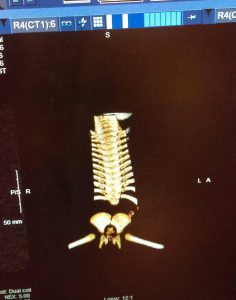
Many doctors have never encountered an individual with sacral agenesis/caudal regression syndrome (SA/CRS). There are no known specialists for this condition but issues associated with this condition are typically treated by specialists focused on that particular area such as orthopedics or urology. Medical specialists who work with individuals who have spina bifida may find treatment of individuals with SA/CRS to be similar, although there are some important differences. iSACRA would be eager to collaborate in research efforts related to the condition of SA/CRS.
A list of potential specialist referrals is here.
A list of potential characteristics is here.
This page, along with information and links under the medical tab on the menu, is aimed at providing the most up-to-date information about this rare condition. First, let’s dispel some common concerns that families and individuals in the course of medical treatment may hear from medical professionals:
Misconceptions about SA/CRS
#1.
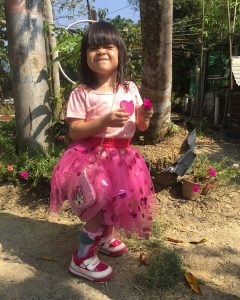
The infant with SA/CRS is unlikely to have a high quality of life-will never sit up or walk and will always be dependent on others. While this condition is rare, from reports a population of almost 1000 individuals and families world-wide, it appears that children born with SA/CRS far surpass expectations in terms of life quality. There is not a single report of a child failing to sit independently regardless of the level of spine that is absent. In almost all cases, children have independent mobility and most are able to walk either independently or with crutches/bracing, at least for a period of time. Those who use wheelchairs are capable of just as much independence in mobility as those who walk. Children attend school, participate in activities from art to competitive sports, and go on to attend college, advance in careers, travel, and live independently. There may be some challenges along the way, and there may be some individuals who have additional complications, but there is no reason to assume a poor quality of life for anyone merely because of a physical difference.
#2.)
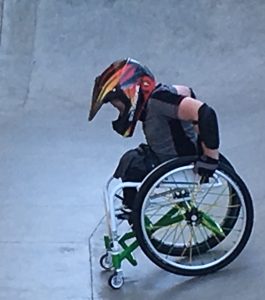
The lack of a lower spine will cause breathing problems or organ failure due to compression of organs. Spinal reconstruction is necessary. Even in cases where the spine terminates as high as T-5, it is very rare for a child or adult with SA/CRS to experience true compromise of organs or lung function, even though their sitting posture may lead to that assumption. The rib cage may grow broader, and the individual may adjust sitting position to accommodate as needed, but there are individuals with high level lumbo-sacral agenesis who compete at elite levels in athletics-basketball, snow skiing, marathons and para-triathlons. They may do so using specialized wheelchair equipment but they do not have reduced lung capacity. Usually no intervention is needed surgically to address what is assumed to be a problem of capacity for space of vital organs. In a few individual cases, use of rods/use of the tibia bone of the leg have been used to achieve spine support. In some cases those individuals report improved GI tract function as one outcome. However, these surgeries are prone to complications of skin breakdown over the rods, infection of the rods, and breakage of the rods. The advantage of this complex surgery is unclear, as most individuals with SA/CRS appear to thrive without any surgical intervention of the spine to support breathing or organ function.
#3)
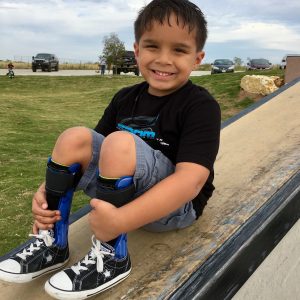
Infants and young children with SA/CRS will need to be tube fed if not meeting standard growth expectations. It may be the case that an infant or child with SA/CRS is quite small and grows quite slowly. Usually the lower limbs are smaller in proportion to the rest of the body, so allowances for growth that is well below the standard growth curve must be made. Small size is not an indicator of poor health. There may be some very specific kinds of conditions that indicate tube feeding, but overall small growth is to be expected with this population.
The child with SA/CRS may have a small stomach. Overfeeding can be extremely uncomfortable and result in esophageal reflux. Often young children with SA/CRS benefit from more frequent meals of smaller portions than consuming a lot of food at one time. Good nutrition is vital, but overfeeding is problematic. There may be individual cases where there are problems of mal-absorption of nutrients or chewing and swallowing conditions that are unrelated to SA/CRS, but slow weight gain or low weight on a standard growth chart alone is not a reliable indicator for tube feeding. Average size is not a beneficial goal for those who may need to carry that weight on under-developed lower limbs or with shoulder and arm strength. Being small is an advantage for mobility. Additionally, there may be ties to obesity in adulthood as a result of pushing the child with SA/CRS to consume too much food in order to meet standard growth expectations. Of course, any child who is losing weight over a period of time is a more serious concern. Concerns about the need for a feeding tube should be verified with testing that indicates difficulties with sufficient nutrient absorption.
#4)
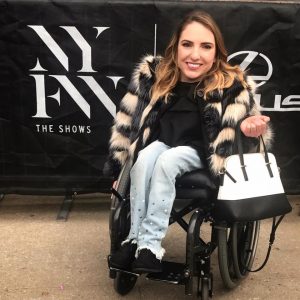
Children with SA/CRS who are short in stature will benefit from growth hormones. Children with SA/CRS are often small, and shorter than their peers because their lower limbs may be smaller in proportion to their upper bodies. They should not be compared to the typical height curve expected if their legs are small or under-developed. Small is not a bad thing. Only in cases where there is testing that indicates true growth hormone deficiency should growth hormones be considered. Growth hormones given to children with SA/CRS may lead to increased spine curvature. Also, if the hormones promote growth, this growth may occur in the upper body, making it more difficult for the child to carry weight on under-developed legs. For children who are using crutches or wheelchairs for mobility, smaller size is an advantage and equates to increased mobility.
#5)

Children with spinal kyphosis and lordosis should be surgically corrected or corrected through bracing of the torso. Many children with SA/CRS are identified as having spinal curves, lordosis, kyphosis and/or scoliosis. Spinal correction is sometimes suggested as being a life saving measure to prevent organ compression, but these concerns do not appear to be validated in most of the SA/CRS population. There don’t seem to be indications of health issues arising from the lordosis and kyphosis sometimes seen in children with SA/CRS. The spine is typically quite rigid and does not appear prone to deterioration. The brace intended to push against the spine to improve or stabilize the curve depends on spinal attachment at both the cervical and the pelvic area. When this attachment is not present (as is often the case in SA/CRS), it is unclear what the brace can achieve. Bracing is used for scoliosis, but it’s use is controversial even in the otherwise physically typical patient. It’s use for those with SA/CRS is virtually untested and unverified in terms of effectiveness or necessity. There may be some negative effects of bracing. Sometimes the bracing itself may prevent development of muscles that act to support the torso and impede the physical development of the child. It also may prevent bone growth. Some studies found that bracing compresses organ function Bracing and organ function, Pulmonary restriction and bracing.
Kyphosis for those with SA/CRS is usually occuring the end of the spine, not a full kyphosis curve but the end of a lordosis curve higher in the back. In most other patients the kyphosis curve is in the upper spine, at the thoracic level, and the lordosis curve in the lower spine, or lumbar area. It is unknown if bracing can address a lordosis curve as compression against the curve from the front would present problems for heart and lung function. Additionally, many with SA/CRS have hyper-sensitive points along the length of their spine (and sometimes in certain areas of the body such as feet or genital region) so bracing and pressure on these points can be exceptionally painful. For scoliosis, in some children, the curve may worsen over time. In rare cases the scoliosis may need to be surgically addressed but in some cases the scoliosis is well tolerated and does not appear to impact organ function. The merits of bracing should be thoroughly examined before taking this course of treatment.
#6)
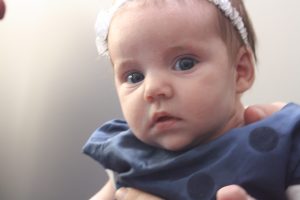
All bladder infections should be treated with antibiotics. UTIs are certainly an important concern to be ruled out when a patient presents with fever. These links may be helpful in evaluating the use of antibiotics for individuals with SA/CRS. Those with SA/CRS often mirror the population of individuals with spina bifida in terms of bladder concerns, but those with SA/CRS sometimes have the additional consideration a single kidney.
This link may be a helpful overview and resource for parents.
See also:
spina bifida and treatment of neurogenic bladder
antibiotic treatment, neurogenic bladder
#7)

Skin breakdown at the point where spine terminates is likely to occur.
Even though some children and adults with SA/CRS appear to have a sharply protruding end of spine, skin breakdown at the site has not been reported among individuals with SA/CRS either in the iSACRA population or in a review of research. Sensitivity at that site is more common, and laying prone, with pressure on the back may be uncomfortable for individuals with SA/CRS.
#8)
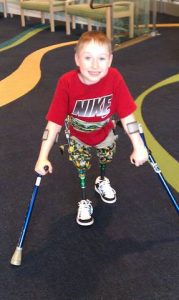
At-knee disarticulation surgery will destabilize a child’s ability to sit. In all cases reported in a group of over 1000 individuals and families, there is not a single instance where disarticulation at-knee reduced a child’s ability to sit in a stable position. Even though the crossing of legs in front may appear to provide sitting stability, it typically does not provide any support against gravity. Instead, increased ease of mobility and more ergonomic wheelchair seating was often reported for those who do have at-knee disarticulation.
#9)
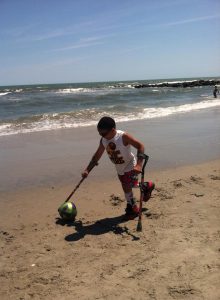

A child who might walk will have decreased motivation for walking if provided with a wheelchair option. Children need to be able to move about as freely as possible. A two year old child toddles away from the parent, testing some boundaries, while at the same time learning important information the environment. The ability to move towards and away from the primary caretaker is an important developmental process for children. Those children who are restricted in doing so may have diminished cognitive experiences. Giving a child a wheelchair who does not otherwise have freedom of movement and is not walking provides that child with important developmental experiences. It will not make the child lazy or unmotivated to walk. A wheelchair is a mobility option, not a sign of failure. Walking and use of a wheelchair are mobility options that allow a child, and later a teen and an adult to make effective and efficient choices about the best way to get from one place to another.
#10)
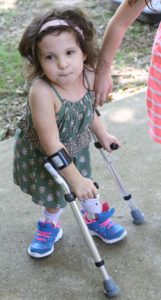
A child with SA/CRS can be treated exactly the same way as a child with spina bifida, spinal cord injury, or mermaid syndrome. There are many similarities for treatment of these conditions, but these conditions are not related to the condition of SA/CRS. There are a number of important differences. Nerve pathways and sensation tend to be more unique. Often the child with SA/CRS has areas of heightened sensitivity where the child with spinal cord injury or spina bifida has diminished sensitivity. The child with SA/CRS may have diminished sensitivity in some areas too. The child with SA/CRS has more competition for space in the torso area, depending on the amount of spine missing, and sometimes experiences more esophageal reflux as a result. The child with SA/CRS may have a reduced appetite due to a smaller stomach size and need more frequent smaller meals. A child with SA/CRS may not have some organs in the expected place. For example, if doing a mitrofanoff procedure using the appendix, it might be a good idea to find out first if the appendix is in the typical place and not for example, retrocecal. Children with tapered end spinal cords and SA/CRS appear to have issues more frequently with tethered cord. Children with SA/CRS may experience more complex bowel , bladder and kidney issues. Children with SA/CRS (without spina bifida-as some children may have both) do not typically have any issues with hydrocephalus or Chiari malformation. Children with SA/CRS are more likely to have fused/fixed knee/ankle joints and hips that splay outward.
